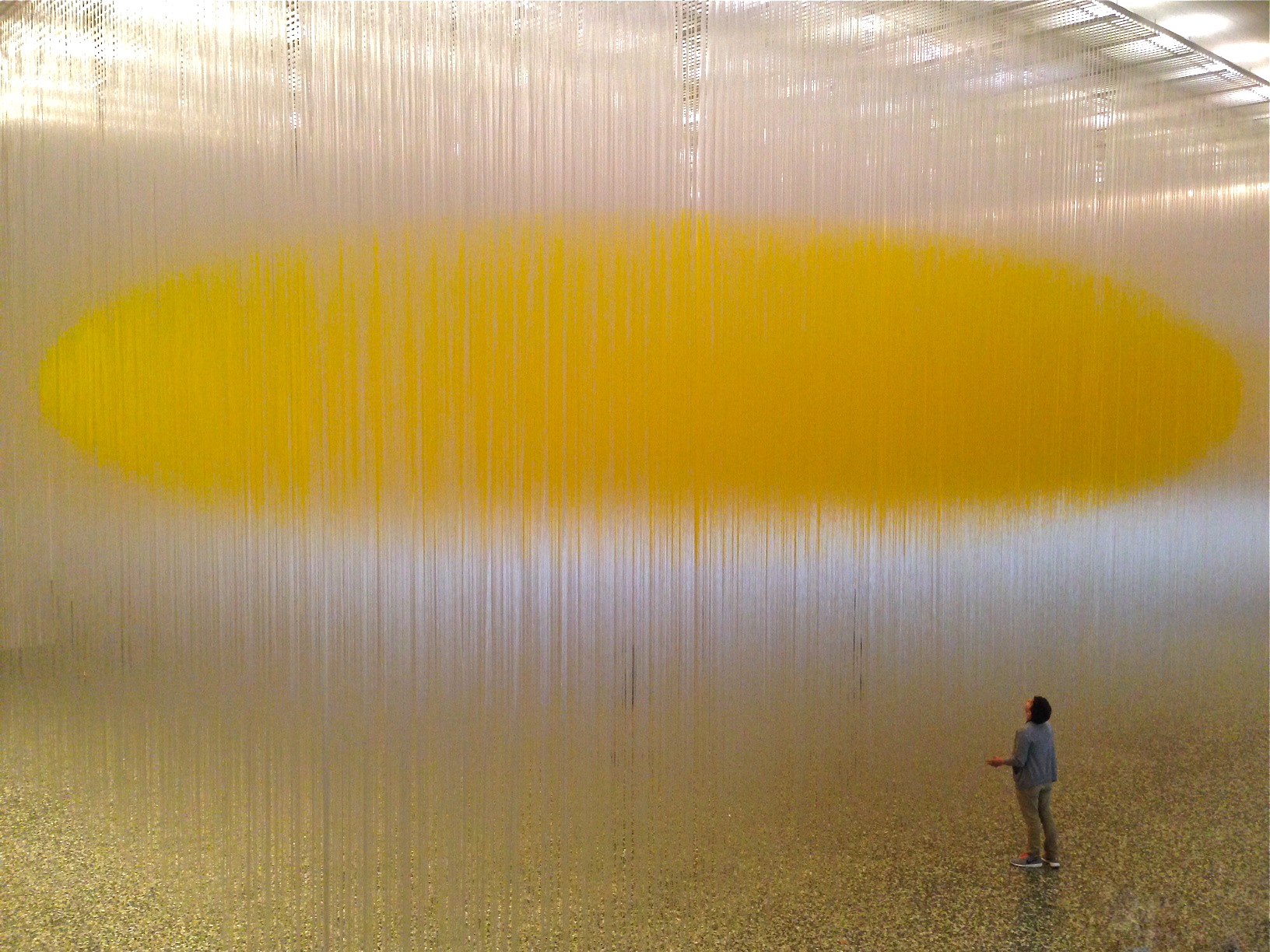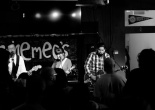The Impenetrable Genius of Jesus-Rafael Soto’s Last Work

By Luna Oliveira
Photo by Luna Oliveira
It was with a heavy heart that Houston waved goodbye to the Architects of Air’s “Miracoco” installation at the Discovery Green at the end of March. Houstonians found themselves with contrasting emotions of both gratitude in having had access to such an enormous project, and sorrow–for it might be long before the general public will get the chance to interact physically with art of this caliber.
Mourning through the month of April, our city received great news: Houston was about to be gifted a penetrable by Jesus-Rafael Soto. This penetrable was to be brought on by the same venue that presented the wonderful James Turrell exhibit “The Light Inside” (2013) and Carlos Cruz-Diez’s interactive pieces during “Color in Space and Time” (2011): the Museum of Fine Arts.
Imagining what the “Houston Penetrable” would look or feel like, it is inevitable to draw a comparison to Soto’s piece housed in the Los Angeles Contemporary Museum of Arts. The LACMA‘s penetrable’s thick, long strands of yellow plastic tubes hang down from the ceiling from metal plates. From the outside, both children and adults lying on the ground or hanging from the plastic tubes are not visible, but once inside, their unique exchanges with the piece become a part of the exhibit. However, the experience of LACMA’s penetrable gave one no preparation for the plastic rain that was about to hit Houston this summer.
The MFAH received the project from Jesus-Rafael Soto in 2024. Soto passed away in 2024, long before completion of his project, leaving Houston with the responsibility of installing Soto’s masterpiece of a lifetime. Filling two thousand and six-hundred square feet of the museum’s main entrance exhibit hall (Cullinan Hall) and hanging 28 feet high, the 24,000 PVC tubes represents the most ambitious project by Jesus-Rafael Soto.
The first penetrable of its kind in both size and dichromatic design, our MFAH had to go to great length to honor Soto’s legacy. As recounted in the MFAH’s video on the penetrable, there were countless man-hours spent on this project. Ten years in the making, the penetrable has touched many in the museum staff, but the bulk of the work was done by two artists from Atelier Soto who tied knots (both literally and not) for two years to complete the piece.
Exposed on the walls leading to the penetrable, the MFAH presents seven clues that compose the answer to Soto’s arrival at this masterpiece. The seven works on display talk to the viewer about perception, symmetry, movement and, most importantly, space. They start in the year of 1956, with a simple black and white tone and a small piece of metal sticking out of it, much like a whisper of the calm before the storm. The clues then end with a work from the year 1997 that demonstrates clearly the artist’s progression to a bolder piece that still holds all of the original intent of his earlier works. Drawn by foreshadow from his earlier works, and inspired by the development of his creative intellect, the penetrable is the great finale to his artistic life, which ended too short.
The penetrable then, placed at the end of the hall, up in the podium of Cullinan Hall, falling above our heads as what it represents to Houston: rain after a drought personified in plastic. The simplicity and lightheartedness of the piece elicit enjoyment from small and big kids alike. Much like the penetrable installation in Los Angeles, the true art is in people’s reactions to the piece.
With a sun-colored oval floating in the middle of the sea of plastic, the piece gains even more movement than it would otherwise. When a kid (or adult) runs through the piece, the movement is not contained to where the child stands, but to all the strands in proximity, causing the big sun to lose its shape for a split second and regain it soon after, just to be lost again by the next person who decides to twirl inside the piece. From the inside, however, there is a different perception: The sun stands still while the transparent tubes move below. And this change of perception in space is exactly what Soto envisioned–along with the strange wish to “cover the whole world” with penetrables.
It is an iconic piece connecting Soto and Houston, representing all of the things our city inspires. There is no doubt the “Houston Penetrable” has helped demonstrate that, truly, for Houston, the sky is the limit (and NASA will contest you on that).
The Museum of Fine Arts Houston is open Tuesday through Sunday and free every THURSDAY from 10:00 a.m. to 9:00 p.m. Do not forget to post a picture on Instagram and have it printed at the exhibit by using the hashtag: #SotoSummer. For more information access the website.





4 Responses to The Impenetrable Genius of Jesus-Rafael Soto’s Last Work
You must be logged in to post a comment Login